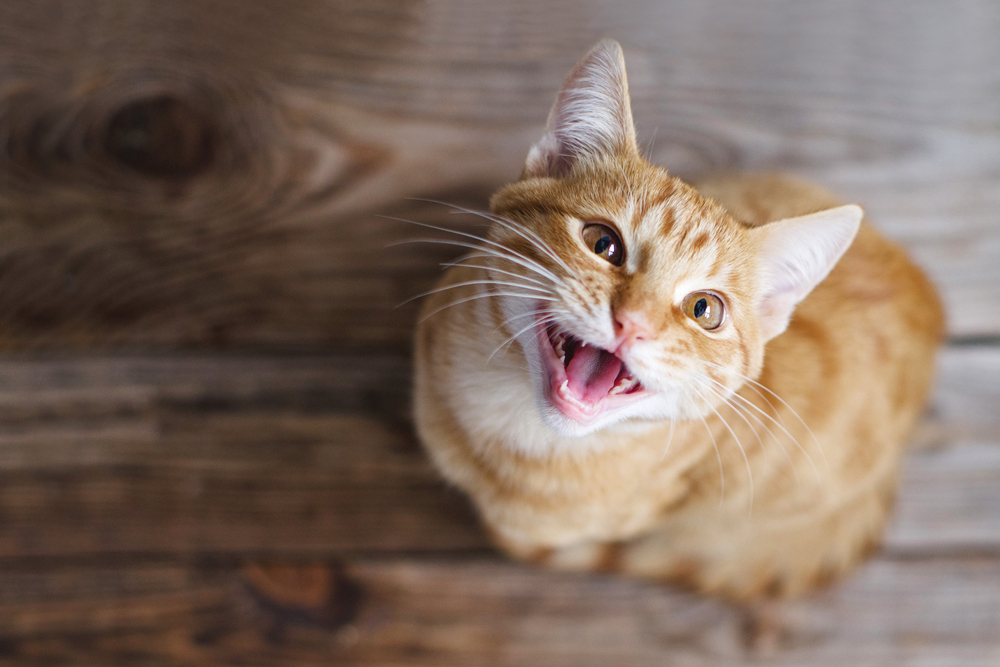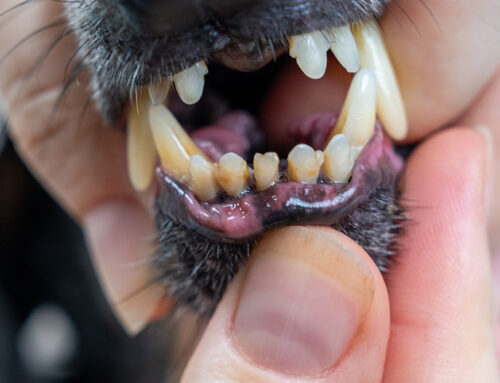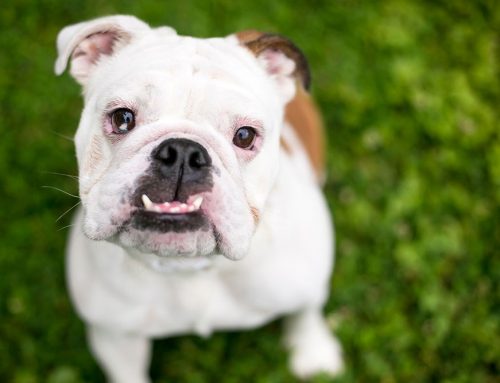Periodontal disease is a common dental condition that affects many pets, often without their owners realizing, until the disease has advanced. Like people, pets suffer from gum inflammation, oral infections, and other dental issues that lead to discomfort and general health problems. Our North Bay Veterinary Dentistry team discusses caring for your furry pal who has been diagnosed with periodontal disease and gives post-treatment tips to reduce disease progression.
Evaluating periodontal disease in pets
To determine the treatment level needed to restore your pet’s oral health, we will first assess the extent of the disease through a comprehensive oral examination performed under general anesthesia. While your pet is asleep, our first step is to obtain imaging. We use Cone Beam CT technology to quickly obtain 360 degree images of the structures of the head, including the teeth, bones of the skull, the ears, eyes, and jaw joints. We then safely and thoroughly assess each tooth by probing around the gum line, checking for periodontal pockets that hold infection.
Periodontal disease treatment for pets
After we evaluate your pet’s oral health, we will customize their treatment plan. Periodontal disease treatment varies depending on the severity of the condition, but the basic premise is the same—plaque removal. Some possible treatments for periodontal disease include:
- Professional dental cleaning — A professional dental cleaning performed by a veterinary team while your pet is under anesthesia is the primary periodontal disease treatment. Anesthesia-free dental cleanings may remove unsightly tartar, but they fail to reach the root of the problem, because only the crowns above the gum line (and typically only the outer surfaces, not the inside and between-the-teeth spaces) can be cleaned. Professional dental cleanings involve scaling to remove plaque and tartar above and below the gum line around the entire crown of the tooth, and anesthesia is required to ensure the treatment is comprehensive, and pain- and stress-free.
- Root planing — Root planing involves cleaning out deeper pockets that have formed around a tooth, smoothing the tooth root surfaces, and removing plaque, calculus, and diseased tissue, including the infected and inflamed tissue layer inside a periodontal pocket, so that healthy tissue will close around the tooth.
- Periodontal flap surgery — Deeper periodontal pockets cannot be fully treated without creating a gingival flap to access the deepest parts. By creating a surgical flap the entire pocket can be cleaned and smoothed before it is closed and allowed to heal.
- Bone grafts — Bone loss is a serious consequence of periodontal disease, but in certain circumstances, bone graft material can be placed in a periodontal pocket to help regrow lost bone and stabilize the teeth.
- Tooth extraction — Advanced periodontal disease destroys the supportive structures and loosens teeth. When a certain degree of periodontal attachment is destroyed, the only remaining therapy is extracting the tooth so that the mouth can heal. Pets with overcrowded teeth or abnormal anatomy that contribute to periodontal disease may also benefit from strategic extractions to create more room for the remaining teeth.
- Perioceutics — After periodontal pockets are cleaned, antibiotic products can be placed directly into the pocket to enhance healing and reduce pocket depth.
Caring for your pet after periodontal disease treatment

Continuing plaque control after an anesthetized cleaning is the very best way to prevent progression of your pet’s periodontal disease. General guidelines include:
- Follow your veterinarian’s instructions — When your pet is discharged, you will receive detailed post-treatment care instructions that explain the problems to watch for, how to care for extraction sites, how and when to administer medications, and what to feed during recovery.
- Monitor your pet for discomfort — Keep an eye on your pet for any signs of discomfort, such as reluctance to eat, excessive drooling, or pawing at the mouth. If you see anything unusual, contact our team.
- Feed a soft diet — Initially, offer soft or moist food to make eating easier, especially if extractions were performed. Your veterinarian will recommend the appropriate time to reintroduce regular food or a prescription dental diet.
- Administer prescribed medications — If your pet has been prescribed oral antibiotics, pain medication, or dental care products, administer them as directed. Also, you must not discontinue the medication prematurely, despite your pet seeming to improve.
- Avoid chew toys and hard treats — Hard chew toys or treats should not be offered during the initial recovery phase. They can be abrasive and may cause discomfort or damage the extraction sites.
- Resume oral care gradually — Gradually reintroduce at-home dental care routines, such as toothbrushing, once your veterinarian gives the green light. Start gently (often you can start with a wipe or gauze rather than a brush) to avoid aggravating the healing in your pet’s mouth.
- Schedule follow-up appointments — Do not miss follow-up appointments, which are necessary to monitor your pet’s progress and address concerns that may arise.
- Maintain regular dental care — Continue with a consistent dental care at-home routine that involves daily toothbrushing, ideally using a toothbrush, and providing dental-friendly treats and chews.
- Schedule oral exams — Schedule regular dental checkups with your primary care veterinarian or our team to help catch potential issues early and ensure ongoing good oral health. We recommend annual exams at a minimum.
- Watch for recurrence — Be vigilant for signs of disease recurrence, such as bad breath, red or swollen gums, new sensitivity during brushing or chewing, or changes in eating habits.
Caring for a pet with periodontal disease involves diligent post-treatment care and a commitment to long-term prevention. Discuss how you can best care for your four-legged friend with periodontal disease by scheduling a consultation with our North Bay Veterinary Dentistry team.






Leave A Comment